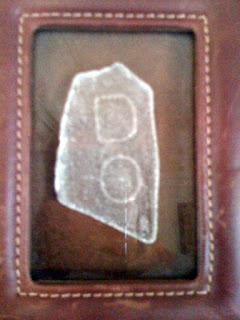On the book/curio shelves embedded in the wall of our main stairwell sits a “sign.” I put that in quotes because the sign is really a set of brushed chrome-looking, chunky letters set in sections inside a sturdy cardboard box. The letters spell “imagine.” I bought the “sign” for cheap at Target, back when the house was being readied for public tours, partly as a curio to place on a shelf to make the home look “lived in” and partly because at the time the letter spoke to me: imagine a magnificent beach-side abode that was lovely to look at as well as terribly environmentally conscious and then managing to make that image come true. The sign seemed to epitomize what we have done. And it served as a corny talisman of things we might imagine and do in the future.
Every day since we have lived here those letters have resided on that shelf; sometimes they are at an artistic angle to the shelf (as when I placed them there) and sometimes they are perfunctorily square with the shelf (as when the house cleaner replaced them after dusting under them. They have sat there during euphoric times when we were doing well economically and the world seemed our brass ring and they have sat there during leaner times when they inspired us to think of ways to reinvent ourselves and they have sat there during reality moments when we tried to sell the house and there they sit now. I see them every day that I descend the stairs. These days I spend a bit more time contemplating them as it takes me three times longer to descend now that my right leg and foot don’t function so well. And, in my current state–physically, emotionally–they are not a talisman but a cruel joke.
Imagine. The word is meant to inspire, to embolden the reader to think beyond what is or seems possible, and perhaps to consider that what we can imagine can truly happen. An imagination is a wonderful thing but it is made more wonderful by presupposition that what we imagine we can bring to fruition. Isn’t that how most inventions happen? Imagine is in many ways the same thing as “picture.” If I can picture something might I also figure out how to take that picture, deconstruct it into its composite parts, analyze how those parts work together and then recreate the picture outside the frame in the three-dimensional realm? It is how I think the rational mind thinks. We don’t tend to stop at “imagining;” but rather our imagining carries our thoughts, sometimes almost simultaneously on to “creating.” This is why imagining–picturing if you will–can be an exercise in brutality.
I can picture myself totally healed, able to move my toes, bend my foot, make it do what my mind wills it to do but that unfortunately does not make it so. Sometimes, I imagine myself waking some morning in the not so distant future, and as if this stroke and its residual effects never happened (were all part of some insane dream) I would turn to step out of bed and my right foot and leg would miraculously work in unison with my left foot and leg. Imagining does not make it so, even though intellectually I think I know how all the parts are supposed to work and my mind wills my parts to work the way that they have effectively for more than 50 years. I can picture myself thin (only thin; I am resigned to being older, it’s really okay with me), picture what it would be like to once again fit into my meager wardrobe, picture what it would look like to eat and move like a thin person. But it is a fleeting picture once the reality of hunger, depression, availability–whatever the cause of my eating–takes over.
Wouldn’t it be advantageous to the psyche if we could stop “imagining” those pictures that are unattainable? We would have less grist for depression. But I think for most of us it is human nature, in part because we can’t shake the notion that imagining will somehow be a step toward realizing.
You, you may say
I’m a dreamer, but I’m not the only one
I hope some day you’ll join us
And the world will be as one
–“Imagine,” John Lennon, 1971
